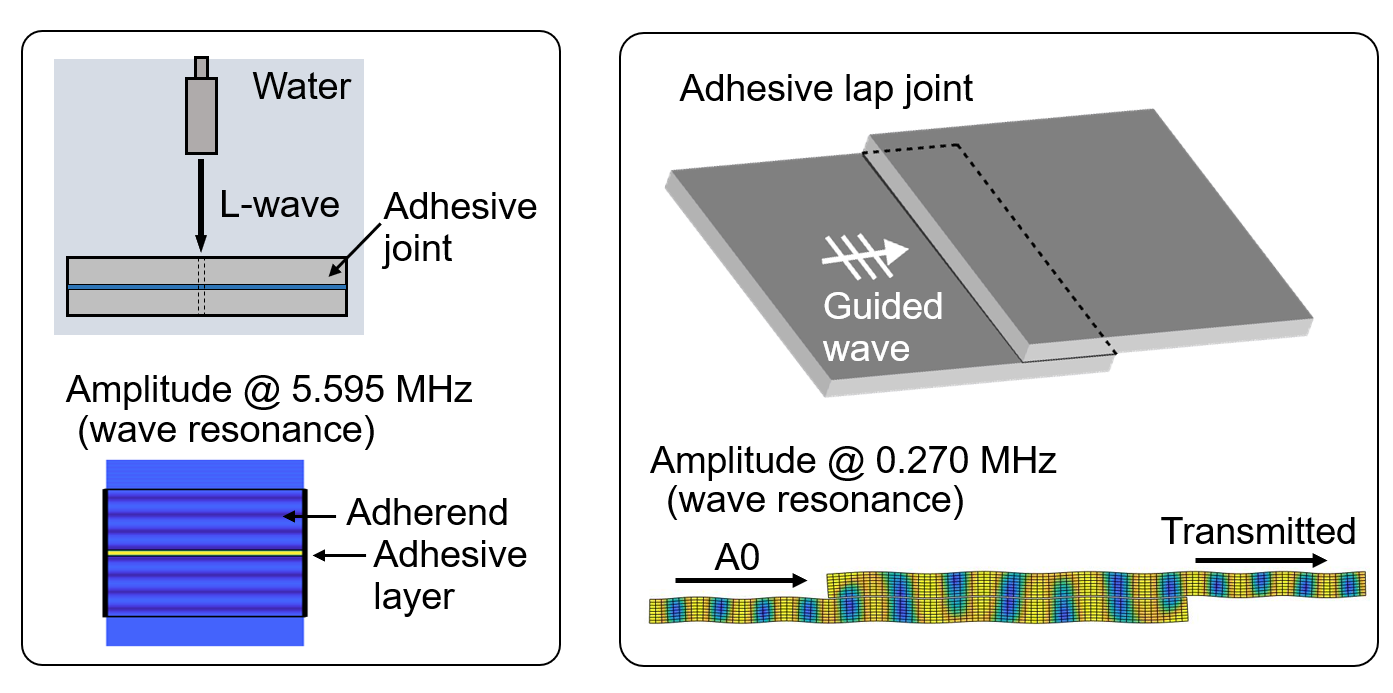STUDIES
Remote imaging inspection for large structures using a scannning laser source technique
Most of large constructions such as pipeworks, tanks and bridges consist
of plate-like structures, where flexural vibration is largely generated
when laser pulse is irradiated onto the surface. Our previous studies reveiled
theoretically and experimentally that the energy of flexural vibration
corresponds to the bending stiffness at the laser spot. When the laser
spot for generating flexural vibration is rastered over the plate-like
structure, a distribution of the bending stiffness can be obtained from
the detected signals. Generally, because a local wall-thinning exhibits
smaller bending stiffness, the distribution becomes a defect image. Since
laser irradiation can be executed at a remote distance, we expect that
this imaging technique is useful for remote inspection without accessing
high constructions and hazardour areas. This technique is also applicable
for imaging curved plates like pipes, we also expect that the imaging of
inner defects in a plate-like structure will be feasible like optical and
IR cameras in the near future, and therefore we call the imaging system
"E-camera".

NDE for lap joints with the E-camera
Low frequency range below 10 kHz is used in the imaging NDE for large structures
shown above.The higer frequency range over 10 kHz can also be applied in
the imaging which leads to improve resolution of defect images. This indicates
that the E-camera is applicable to smaller engneering products and we firstly
tried NDE for adhesive regions in lap joints.


Characterization of adhesive joints based on frequency spectrum of bulk wave (guided wave)
With the expanding use of adhesive bonding due to the advance of adhesives,
the establishment of the nondestructive evaluation (NDE) for weak bonding
parts is required. When a longitudinal wave or a guided wave in thin plates
(Lamb wave) is incident on an adhesive joint, multiply reflected waves
at the joint result in constructive (or destructive) interference, which
leads to wave resonance in the joint at certain frequencies. Our study
is ongoing to reveal these phenomena theoretically and to apply it to the
evaluation of cohesive/adhesive properties for adhesive joints of metals
and composites.

Guided wave analysis using the Semi-Analytica Finite Element Method (SAFE)
The images of defects and adhesive areas in the E-camera were provided
at the resoultion much higher than the wavelength of flexural vibration
(A0 mode of Lamb wave). To investigate the principle of the superresolution
imaging, numerical analyses with the semi-analytical finite element (SAFE)
were conducted. The SAFE has become one of the standard caculation technique
for guided wave propagation and widely used as an inevitable tool for guided
wave analyses since Hayashi et al. published the first paper on it in 2003.

New NDE using diffused acoustic field in a solid media
In NDT/NDE for engneering materials using ultrasonic, reflected and transmitted waves of pulsed wave is generally used. Resonance of an entire object is also used for material characterization and diagnosis.The diffused acousticl field is the wave field appeared after multiple reflections of the transient waves and the NDE with it is a totally different approach from the ordinary NDT/NDE. Our group currently uses the NDE with diffused acousticl field to improve the imaging of E-camera.